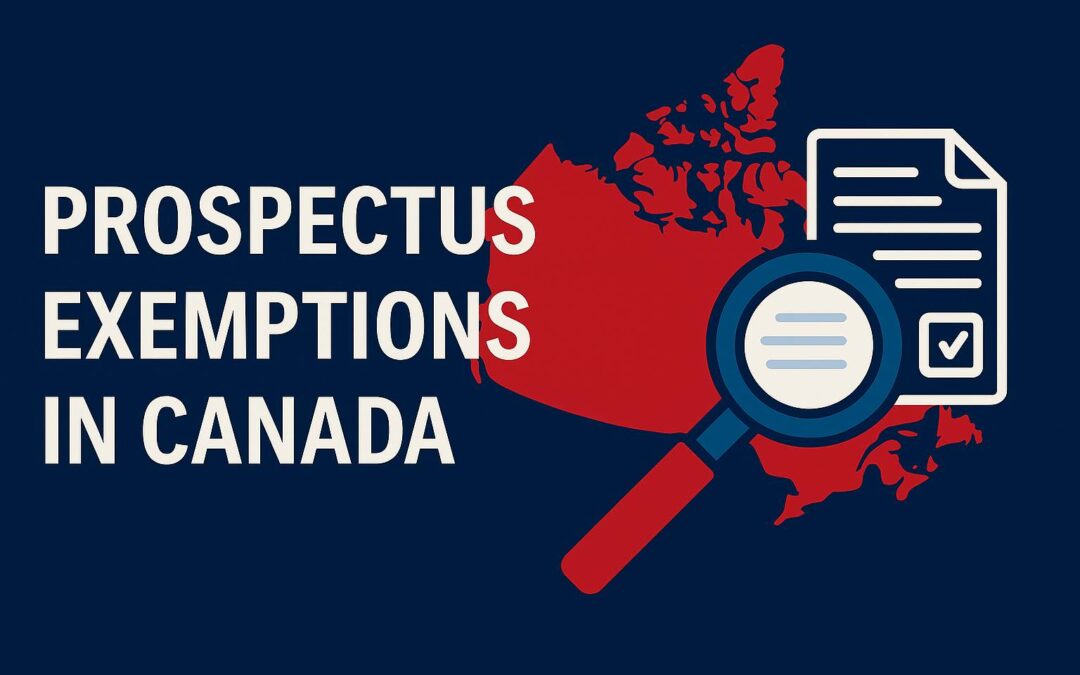Understanding Prospectus Exemptions in Canadian Capital Markets
Why This Matters
Prospectus exemptions play a central role in how private and early-stage companies raise capital in Canada. While going public puts companies into a continuous disclosure regime, most issuers still rely on prospectus-exempt offerings to fund operations, complete RTOs, or finance acquisitions.
For founders, understanding how and when these exemptions apply is critical—not just for legal compliance, but for deal execution, investor structuring, and long-term listing success.
The Purpose of Prospectus Exemptions
Under Canadian securities law, any distribution of securities requires either:
- a filed prospectus reviewed by a securities regulator, or
- an exemption from that requirement
Prospectus exemptions allow companies to raise money without the cost, delay, and disclosure burden of preparing a prospectus—so long as they comply with specific conditions.
Key Prospectus Exemptions in Canada
The most common prospectus exemptions used in go-public or pre-go-public capital raises include:
1. Accredited Investor Exemption (NI 45-106, s. 2.3)
- Applies to high-net-worth individuals, institutions, and entities meeting income or asset thresholds
- No limit on capital raised
- No investor limit per transaction
2. Private Issuer Exemption (NI 45-106, s. 2.4)
- Available only to companies with fewer than 50 shareholders (excluding employees)
- Securities may be sold only to pre-qualified persons such as directors, officers, family, close friends, close business associates, or accredited investors
- Issuer must not have distributed securities to the public
3. Minimum Amount Investment (s. 2.10)
- Investor must purchase at least $150,000 in one transaction
- Only applies to non-individual investors (e.g., corporations, trusts)
4. Offering Memorandum Exemption (s. 2.9)
- Permits capital raising from eligible investors with fewer restrictions than a prospectus
- Issuer must deliver an offering memorandum that meets prescribed disclosure requirements
- Subject to ongoing financial statement filing obligations in some provinces
5. Existing Securityholder Exemption
- Allows TSXV-listed companies to raise capital from current shareholders without a prospectus
- Often used for retail-accessible financings
How This Connects to Go-Public Strategies
Many reverse takeovers and CPC qualifying transactions involve private placements conducted under prospectus exemptions. These financings may occur:
- Before the go-public transaction, to prepare the balance sheet
- Concurrent with the RTO or listing, to meet working capital or listing requirements
The structure, disclosure, and investor type of these placements must align with exchange policies. Failure to comply with prospectus exemption rules can delay or derail a listing.
Founders Often Overlook This
While legal counsel typically leads the exemption analysis, founders still need to understand the implications. Mistakes at this stage—such as taking money from an ineligible investor, using the wrong exemption, or failing to document properly—can have long-lasting effects, including forced rescissions, fines, or delays in regulatory approval.
Equally important: some exemptions trigger reporting obligations, such as Form 45-106F1 filings, which must be submitted within 10 days of the financing closing.
Closing Thought
Prospectus exemptions are essential tools—not shortcuts. Used properly, they can streamline capital formation. Used carelessly, they can expose your company to risk. Every go-public transaction in Canada intersects with these rules at some point. Understand the terrain before raising capital.
For more insight on using prospectus exemptions in a go-public roadmap, contact us.

